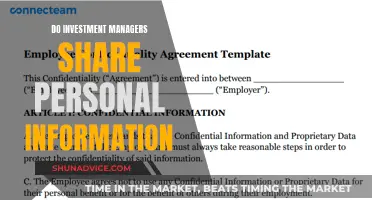
Tracking at-risk investments in an LLC involves understanding the tax implications and regulations surrounding loss limitations and tax shelters. At-risk rules, outlined in Section 465 of the Internal Revenue Code, aim to prevent investors from writing off more than their investment amount and ensure that claimed losses are valid. These rules apply to individual taxpayers and closely held corporations, impacting the ability of LLC members to deduct losses. By assessing company fundamentals, economic indicators, and diversifying holdings, investors can better navigate market volatility and minimise risk exposure. Additionally, the structure of an LLC provides asset protection and pass-through taxation benefits, shielding personal assets from investment risks.
| Characteristics | Values |
|---|---|
| Purpose | Protect personal assets from investment risks |
| Taxation | Pass-through |
| Investment Types | Real estate, stocks, bonds, startups |
| Benefits | Asset protection, pass-through taxation, flexibility |
| At-Risk Rules | Prevent investors from writing off more than the amount they invested |
| At-Risk Rules Application | Individual taxpayers, closely held corporations |
| At-Risk Basis Calculation | Investor's investment + borrowed amount + liability for that investment |
What You'll Learn

Understand the 'at-risk' rules
Understanding the at-risk rules is essential for investors looking to claim deductions for losses incurred from their investments. These rules are designed to ensure that claimed losses are valid and prevent taxpayers from manipulating their taxable income through tax shelters. Here's a detailed overview of the at-risk rules:
Overview of At-Risk Rules:
At-risk rules are tax shelter laws outlined in Section 465 of the Internal Revenue Code (IRC). They limit the amount of allowable deductions that an individual or closely held corporation can claim due to engaging in specific activities that may result in financial losses. A closely held corporation, as defined by the IRS, is one in which more than 50% of its outstanding stock is owned by five or fewer individuals during the latter half of the tax year.
The at-risk rules were introduced with the enactment of the Tax Reform Act of 1976. These rules apply to individual taxpayers and closely held corporations, while an LLC itself is not subject to them. However, the rules are applied at the individual member level for losses passed through from the LLC.
Calculating At-Risk Basis:
An investor's at-risk basis is calculated annually at the end of the tax year. It is determined by combining the amount of their investment in the activity with any borrowed amounts or liabilities related to that particular investment. The at-risk basis may increase annually due to additional contributions or income from the investment. Conversely, it decreases when deductions exceed income and distributions.
Application of At-Risk Rules:
At-risk rules are intended to prevent investors from writing off more than they invested in a business, typically a flow-through entity such as S corporations, partnerships, trusts, or estates. Investors are not allowed to deduct any amount exceeding their at-risk basis at the end of the tax year for activities in which they are not material participants. Additionally, any unused losses can be carried forward until there is sufficient positive at-risk income to allow the deduction.
Activities Covered by At-Risk Rules:
Initially, the at-risk rules applied to specific activities considered most vulnerable to tax-shelter abuses. These activities included exploring or exploiting oil and gas resources, holding or producing motion picture films or videotapes, leasing equipment, and exploring or exploiting geothermal deposits. In 1978, Congress extended the rules to all activities except real estate. However, the Tax Reform Act of 1986 further expanded the rules to cover real estate activities under certain circumstances.
Aggregation of Activities:
The determination of amounts at risk is generally made on an activity-by-activity basis. However, it's important to understand which activities can be aggregated for at-risk purposes. The original five at-risk activities, except equipment leasing, can be aggregated. For example, multiple oil wells or distributed films can be treated as a single activity. On the other hand, real estate activities are considered a single activity, regardless of the number of properties involved.
In summary, the at-risk rules play a crucial role in regulating tax deductions for individuals and closely held corporations. By understanding these rules, investors can effectively manage their tax liabilities while ensuring compliance with IRS regulations.
Invest in Managed Futures: Diversify and Protect Your Portfolio
You may want to see also

Know the difference between systematic and non-systematic risks
When it comes to investing, it's crucial to understand the difference between systematic and non-systematic risks to make informed decisions. Here's a detailed breakdown of these two types of risks:
Systematic Risk:
Systematic risk, also known as market risk or undiversifiable risk, is inherent in the entire market and affects all investments. It arises from economic, geopolitical, and financial factors such as interest rate changes, inflation, recessions, wars, and currency exchange rate fluctuations. Systematic risk is unpredictable and challenging to avoid. It is tied to market conditions and cannot be mitigated through diversification alone. However, investors can manage it by building a diversified portfolio with various asset classes, such as fixed income, cash, and real estate. These assets will react differently during systematic changes, helping to balance your portfolio.
Non-Systematic Risk:
Non-systematic risk, on the other hand, is limited to a particular asset class or security. It is often associated with the "idiosyncrasies" of a specific asset. Non-systematic risk can be mitigated through diversification. By spreading your investments across different assets, you can reduce or eliminate non-systematic risk. This type of risk is diversifiable, meaning that it can be practically reduced or eliminated through a well-diversified portfolio.
Key Differences:
The main distinction between systematic and non-systematic risks lies in their scope and manageability. Systematic risk affects the overall market and is challenging to avoid, while non-systematic risk is specific to certain assets or industries and can be mitigated through diversification. Systematic risk is inherent in the market and reflects the impact of external factors, whereas non-systematic risk is influenced by internal factors such as company management, financial structure, and consumer preferences.
Managing Risk in Investment LLCs:
When investing through an Investment Limited Liability Company (LLC), it's important to consider both systematic and non-systematic risks. LLCs offer asset protection and pass-through taxation benefits. By structuring your investments through an LLC, you can shield your personal assets from investment risks. Additionally, the pass-through taxation simplifies your tax situation by passing taxes on earnings directly to members without double taxation. However, it's crucial to consult with tax professionals to fully understand the tax implications of pass-through taxation.
In conclusion, understanding the difference between systematic and non-systematic risks is essential for making informed investment decisions. Systematic risk affects the entire market and is challenging to avoid, while non-systematic risk is specific to certain assets and can be mitigated through diversification. By recognizing and managing these risks effectively, investors can make more strategic choices and potentially improve their investment outcomes.
Savings Surplus: Impact on Economy and Investment Opportunities
You may want to see also

Plan for taxes
When planning for taxes, it's important to understand the tax implications of your LLC structure. LLCs are considered "pass-through entities," which means the LLC itself does not pay federal income taxes on business income. Instead, income "passes through" to individual members of the LLC, who pay federal income tax on their share of the LLC's earnings via their own individual tax returns. This is how LLCs avoid double taxation, where profits are taxed at both the corporate and individual level.
If you are the sole owner of your LLC, you will file taxes as a sole proprietor, reporting income generated from the business on Form 1040 and expenses on Schedule C. If your LLC has multiple members, it will file Form 1065, U.S. Return of Partnership Income, reporting profits, losses, credits, and deductions related to the business. Each member of the LLC will then receive a Schedule K-1 document to use when filing their own taxes, showing their share of income, credits, and deductions from the LLC.
As an LLC member, you are considered self-employed and must pay self-employment taxes, which include Social Security and Medicare taxes (FICA taxes). In 2024, the self-employment tax rate was 15.3%, with 12.4% for Social Security and 2.9% for Medicare. If you are a single filer earning over $200,000, or filing jointly with a spouse and earning over $250,000, you may also be subject to an additional 0.9% Medicare tax. You can use Schedule SE (Form 1040 or Form 1040-SR) to calculate your self-employment tax liability.
To lower your LLC's taxable income, you can take advantage of various business deductions. Most expenses associated with the business are tax-deductible, including initial start-up costs and a wide range of operational costs such as office supplies, graphic design, business meals, medical/healthcare expenses, tools, and technology. Additionally, you can deduct health insurance premiums and mileage for medical appointments.
Another way to reduce your tax burden is to set up a retirement account for your LLC, such as a SEP-IRA, Solo 401(k), IRA (traditional or Roth), or Simple IRA. Contributions to these accounts are deductible and can help lower your taxable gross income.
You also have the option to elect how your LLC is taxed. By default, LLCs are taxed as pass-through entities, but you can choose to be taxed as a C corporation or an S corporation. If you choose to be taxed as a C corp, your LLC profits will be subject to corporate income tax, and if distributed to owners as dividends, those dividends will be taxed again at the individual level (double taxation). On the other hand, if you choose to be taxed as an S corp, your LLC will not be subject to federal corporate income tax, and you can reduce self-employment taxes by treating the owner as an employee receiving a salary. However, only the salary will be subject to self-employment taxes, while any remaining profits distributed as dividends will not.
When planning for taxes, it is always recommended to consult with a tax professional or accountant who can provide personalized advice based on your specific circumstances and ensure you are taking advantage of all available tax savings opportunities.
Making 401(k) Investment Changes: A Guide to Getting Started
You may want to see also

Understand the tax implications of pass-through taxation
Pass-through taxation is a system where the income and losses of a business entity are "passed through" to its owners, who then pay personal income taxes on their share of the business. This is in contrast to traditional corporations or C-corporations, where the company itself pays corporate taxes on its income, and then the owners are taxed again on that income when it is distributed to them.
LLCs are considered "pass-through" entities for federal income tax purposes. This means that the LLC itself does not file a corporate income tax return with the IRS. Instead, the LLC owners or members pay tax on any remaining revenue after expenses and debts have been paid. Each owner must report profits left in the LLC, such as those reinvested into the business, on their personal income tax returns.
For single-owner LLCs, the entity is typically taxed as a sole proprietorship, with income and business expenses reported using Form 1040 Schedule C. Multiple-owner LLCs are taxed as partnerships, with members receiving a Schedule K-1 from the LLC, which is then transferred to Part II of Schedule E and any other relevant forms, to be filed with Form 1040. Additionally, each owner must file a partnership information return, Form 1065, which details how revenue was generated and distributed to the owners.
The main benefit of pass-through taxation is the avoidance of double taxation, where income is taxed at both the corporate and personal level. Pass-through entities may also be eligible for a Qualified Business Income (QBI) tax deduction of up to 20%. However, a disadvantage is that owners can be taxed on income they did not receive, and they may be subject to self-employment tax even if corporate tax is avoided.
It is important to note that while LLCs are pass-through entities for income tax purposes, they may still be liable for other state taxes, such as franchise, sales, and use taxes. Additionally, some states may have different requirements for documentation or taxation at the entity level compared to federal regulations.
Investing in Tesla: A Guide for Indians
You may want to see also

Know how to calculate an investor's at-risk basis
To calculate an investor's at-risk basis, you must first understand the at-risk rules. These are tax shelter laws that limit the amount of allowable deductions that an individual or closely held corporation can claim for tax purposes as a result of engaging in specific activities that can result in financial losses. The amount that a taxpayer has at risk is measured annually at the end of the tax year.
An investor's at-risk basis is calculated by combining the amount of their investment in the activity with any amount they have borrowed or are liable for regarding that particular investment. This calculation can be increased annually if the investor makes additional contributions to the investment or receives income from it that exceeds deductions. Conversely, the at-risk basis decreases annually by the amount by which deductions exceed income and distributions.
It's important to note that at-risk rules apply to individual taxpayers and closely held corporations. As a result, an LLC itself is not subject to these rules. However, the rules are applied at the individual member level to losses passed through from the LLC.
Additionally, at-risk rules were designed to prevent investors from writing off more than the amount they invested in a business, typically a flow-through entity such as an S corporation, partnership, trust, or estate. A taxpayer cannot deduct any more than the amount of money they had at risk at the end of the tax year for any activity in which they were not a material participant.
Furthermore, taxpayers can only deduct amounts up to the at-risk limitations in a given tax year. Any unused portion of losses can be carried forward until the taxpayer has enough positive at-risk income to allow the deduction.
For example, consider an investor who invests $15,000 in limited partnership units, a type of flow-through entity. If the business incurs losses and the investor's share of the loss is $19,000, they can only deduct their initial investment in the first year. The excess loss of $4,000 is carried forward. If the investor decides to invest an additional $10,000 the following year, their at-risk limit will be $6,000, calculated by subtracting the suspended loss from the additional investment.
Understanding Your Financial Investment Portfolio Better
You may want to see also
Frequently asked questions
At-risk rules are tax shelter laws that limit the amount of allowable deductions that an individual or closely held corporation can claim for tax purposes as a result of engaging in specific activities that can result in financial losses.
The at-risk rules apply to individual taxpayers and closely held corporations. Consequently, an LLC itself is not subject to the at-risk rules. However, those rules are applied at the individual member level to losses passed through from the LLC.
Tracking at-risk investments in an LLC involves understanding the at-risk rules and their impact on tax deductions. It is important to monitor company fundamentals and economic indicators to stay informed about potential market volatility and adjust your investment strategy accordingly.







